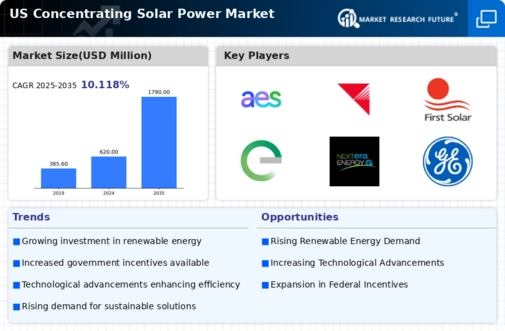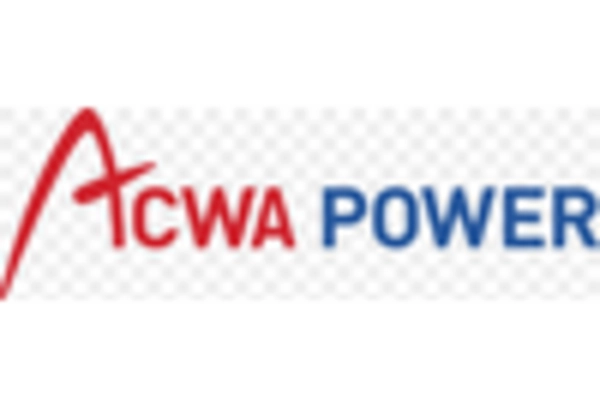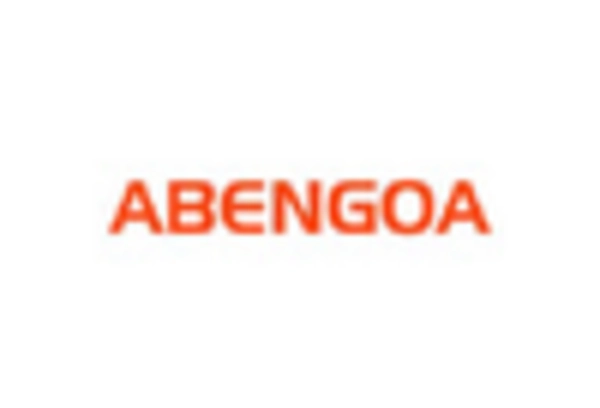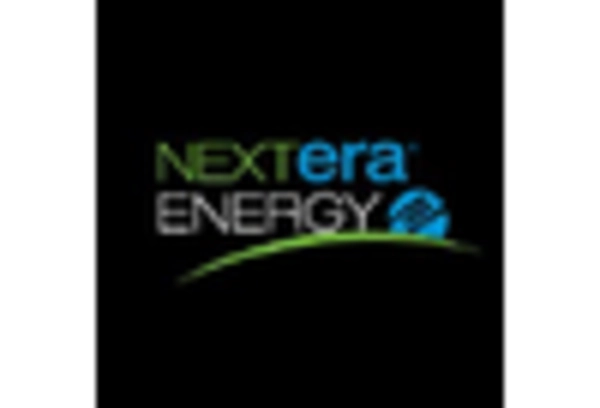Rising Demand for Renewable Energy
The increasing demand for renewable energy sources in the US is a primary driver for the concentrating solar-power market. As environmental concerns grow, consumers and businesses alike are seeking sustainable energy solutions. In 2025, renewable energy accounted for approximately 20% of the total energy consumption in the US, with solar power playing a pivotal role. The shift towards cleaner energy sources is further supported by state-level initiatives aimed at reducing carbon emissions. This trend indicates a robust market potential for concentrating solar-power technologies, as they offer a viable alternative to fossil fuels. The industry's growth is likely to be bolstered by public awareness and advocacy for sustainable practices, which may lead to increased investments in solar infrastructure and technology.
Declining Costs of Solar Technology
The concentrating solar-power market is experiencing a notable decline in technology costs, which is significantly enhancing its competitiveness. Over the past few years, the cost of solar power systems has decreased by nearly 30%, making it more accessible for both residential and commercial applications. This trend is attributed to advancements in manufacturing processes and economies of scale. As the cost of solar panels and related technologies continues to fall, the market is likely to attract a broader customer base. Furthermore, the reduction in costs may encourage utility companies to invest in large-scale solar projects, thereby expanding the market's reach. The financial viability of concentrating solar-power systems is expected to improve, leading to increased adoption rates across various sectors.
Growing Interest in Energy Independence
The growing interest in energy independence among consumers and businesses is a notable driver for the concentrating solar-power market. As energy prices fluctuate and geopolitical tensions persist, there is an increasing desire to reduce reliance on imported fossil fuels. Concentrating solar-power systems offer a pathway to achieve energy self-sufficiency, particularly in regions with abundant sunlight. This trend is reflected in the rising number of installations across the US, as individuals and organizations seek to harness local solar resources. The potential for energy independence may encourage further investment in solar technologies, as stakeholders recognize the long-term benefits of sustainable energy solutions. This shift in mindset is likely to contribute to the overall growth and resilience of the concentrating solar-power market.
Federal and State Renewable Energy Mandates
The implementation of federal and state renewable energy mandates is a significant driver for the concentrating solar-power market. These mandates often require utilities to source a certain percentage of their energy from renewable sources. For instance, several states have set ambitious targets, aiming for 50% renewable energy by 2030. Such regulations create a favorable environment for the growth of solar technologies, as utilities seek to comply with these requirements. The concentrating solar-power market stands to benefit from these policies, as they incentivize investment in solar infrastructure. Additionally, the alignment of state and federal policies may lead to increased funding opportunities for solar projects, further stimulating market growth. This regulatory landscape is likely to enhance the market's stability and attractiveness to investors.
Technological Innovations in Energy Efficiency
Technological innovations in energy efficiency are playing a crucial role in shaping the concentrating solar-power market. Advances in solar thermal technologies, such as improved heat transfer fluids and enhanced mirror designs, are increasing the efficiency of solar power systems. These innovations not only optimize energy production but also reduce operational costs, making concentrating solar-power systems more appealing to investors. In 2025, the average efficiency of solar thermal plants has improved by approximately 15% compared to previous years. This enhancement in performance is likely to drive further investments in the market, as stakeholders seek to capitalize on the benefits of cutting-edge technologies. The continuous evolution of energy-efficient solutions may also lead to new applications and business models within the concentrating solar-power sector.

















Leave a Comment